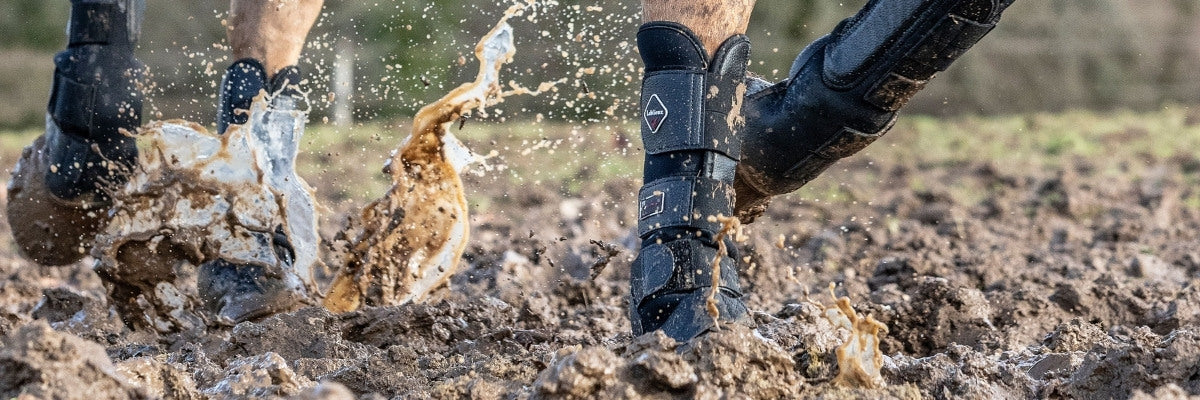

All of the recent wet weather leaves our horses more at risk of seasonal conditions such as mud fever. Some horses will be more prone than others, but it’s important to keep vigilant through the autumn, winter and early spring seasons. Mud fever is caused by continual wetting of the skin, resulting in a breakdown of the protective barrier of the epidermis which allows bacteria to enter and infection to take hold.
The signs of mud fever include:
Matted areas of hair on the legs containing crusty scabs (typically on the backs of the heels and on the pasterns) Small, circular, ulcerated and moist lesions beneath scabs Thick, creamy discharge which is white, yellow or greenish between the skin and overlying scab Deep fissures in the skin Eventual hair loss leaving raw-looking, inflamed skin underneath Heat, swelling and pain when applying pressure to or flexing the limb Possible lameness In severe infections the horse may have a loss of appetite and show signs of lethargy and depressionAs with all illnesses and health conditions, it’s best to catch mud fever early if you can. It’s best practice to check your horse’s legs and hooves on a daily basis - the more familiar you are with your horse’s legs, the more quickly you can identify a problem.
Common causes of mud fever:
Standing in deep mud or soiled bedding for long periods of time Prolonged spells of damp, mild weather White limbs/markings/patches on the body are more prone to mud fever Excessively washing legs and not fully drying them after, particularly with warm water Generally unhealthy skin or low immune systemHow to treat mud fever:
Keeping the skin clean and dry is the basis of treating mud fever; remove the horse from wet and muddy conditions by stabling or using dry turnout if possible Wash the area to remove the scabs to treat the infection beneath - using a solution such as Hibiscrub will soften the scabs so that they can be peeled off Dry the area thoroughly after washing - this is essential Apply creams, lotions and emollients to the affected area Bandaging affected limbs can be a good way of keeping it clean and dry Antibiotics may be needed if the mud fever doesn’t clear upMud fever can be prevented by sectioning off muddier areas of the field, by using turnout boots or mud fever chaps, by avoiding excessive washing of the legs and by applying a barrier cream prior to turnout on clean, dry legs. Instead of washing off wet mud from the legs, allow the mud to dry and brush it off.
Always consult your vet if you are worried about your horse.

